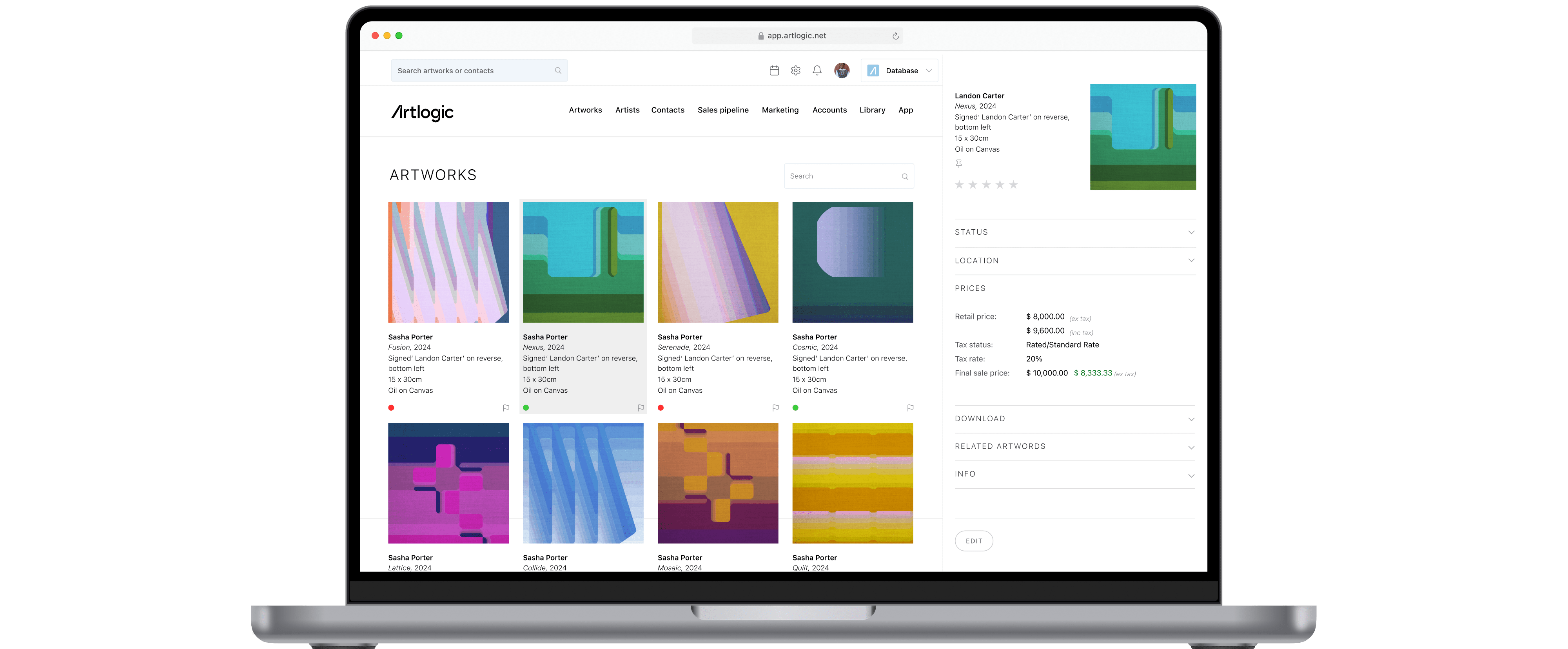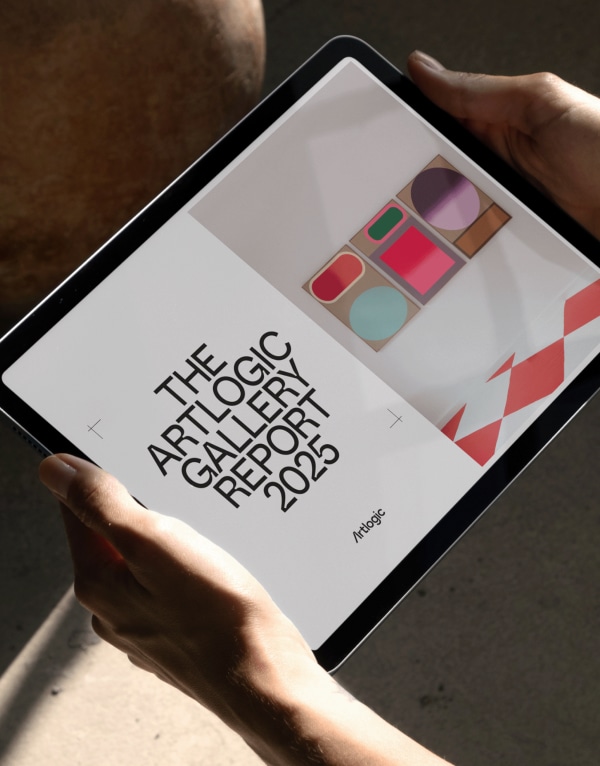-
Gallery Management
Everything needed to run your gallery
Simplify your workflows with powerful inventory, contact, accounting and payment tools. -

-
Trusted by over 5,500 clients worldwideCarlos / IshikawaMarina AbramovićVictoria MiroEsther SchipperThaddaeus RopacPhilip Mould & CompanyGalerie Thomas SchulteP·P·O·WCarlos / IshikawaMarina AbramovićVictoria MiroEsther SchipperThaddaeus RopacPhilip Mould & CompanyGalerie Thomas SchulteP·P·O·WCarlos / IshikawaMarina AbramovićVictoria MiroEsther SchipperThaddaeus RopacPhilip Mould & CompanyGalerie Thomas SchulteP·P·O·W
-



Additional Features
View more-
Website Integration
Easily build exhibtions, online stores and viewing rooms in minutes.
-
Sales Integration
Generate more sales and nurture collector relationships with powerful CRM tools.
-
Sales App
Present artworks and send personalised offers directly from your iPhone or iPad.
-
Marketing Integration
Capture new sign ups and engage with your collectors through stunning newsletters
-
User and Team Management
Maintain security of your data by assigning specific roles and permissions to users.
-
High-Level Security
Industry-recognised security accreditations and compliance with stringent standards.
-
Cloud Backups
Restore your data seamlessly between 90 days to 2 years, depending on your plan.
-
Account Management
Get personalized support and dedicated check-ins with a specialist.
Available with 'Expert' level plans.
Case Studies
View More-

Almine Rech
Case StudyRead moreA client for several years, the gallery relies on the platform to support its global operations.
-

BEERS London
Case StudyRead MoreStaying responsive in the fast-paced art world with Artlogic.
-

Marian Goodman Gallery
Case StudyRead moreThe gallery team streamlines operations and saves time with their new integrated approach.
-

Jonathan Carver Moore
Case StudyRead MoreHow the gallery grew from launch to success with Artlogic as its foundation.
Blog
View More-

Don't Sell in a Silo
Read MoreHow overcoming disparate workflows helps you sell art better
-

4 Key Trends Facing Galleries 2025
Read MoreOur latest report can help you plan for the year ahead.
-

What’s Shaping the Benelux Art Scene Today
Read MoreEmerging art market trends, rising talent, and regional developments.
-

In Conversation with Kiang Malingue
Read moreThe high points and challenges of running a gallery in Hong Kong's booming art scene.













